A lightning arrester is a protective device used in electrical power systems, buildings, communication systems, and other infrastructure to safely divert high-voltage surges caused by lightning strikes or switching events to the ground for preventing damage to equipment.
Actually, a lightning arrester is a device connected between the line and ground. It remains non-conductive under normal conditions, but during a voltage surge above its threshold level, it becomes a highly conductive path between the line and earth, thereby passing the surge energy to the ground. After the surge is over, the arrester again becomes non-conductive to withstand the normal system voltage.
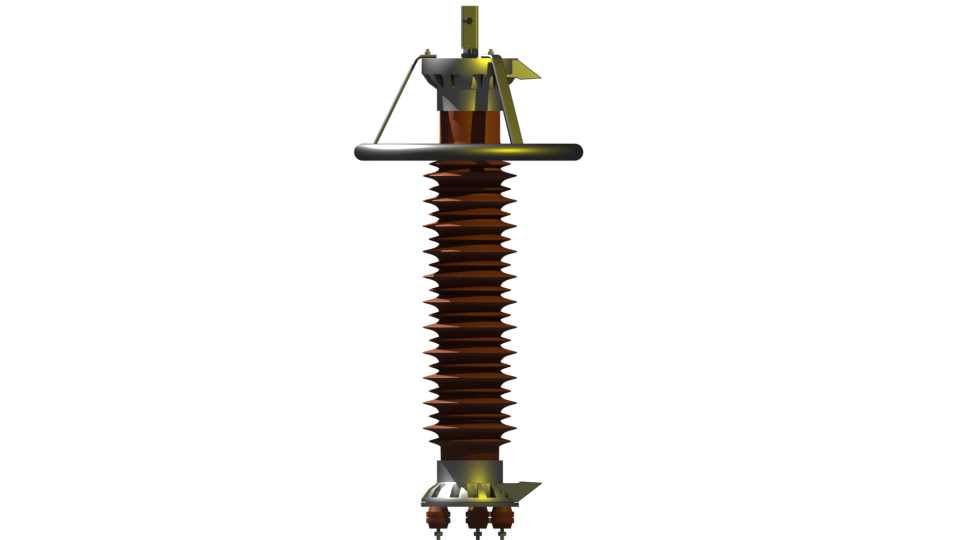
Purposes of Lightning Arrester
Surge protection is vital in power systems. A lightning arrester plays a crucial role in safeguarding electrical equipment. Mainly during lightning and some switching surges, the system voltage gets disturbed with high peak voltage surges. The insulation of the equipment connected to the system may fail to withstand these high-voltage surges. As a result, the insulation can get punctured and become permanently damaged along with the equipment.
A lightning arrester diverts these overvoltage surges to the ground, so the equipment remains safe from insulation breakdown and damage. Therefore, an arrester extends the lifespan of transformers and other equipment in the power system.
Types of Lightning Arrester
There are various types of lightning arresters used in electrical systems. This section briefly covers their basic construction, working principle, and applications.
Rod Gap Lightning Arrester
The Rod Gap Lightning Arrester was among the first developed types. However, it is now considered obsolete and is rarely used today, typically limited to early or temporary installations. Design-wise, it is simple and cost-effective.
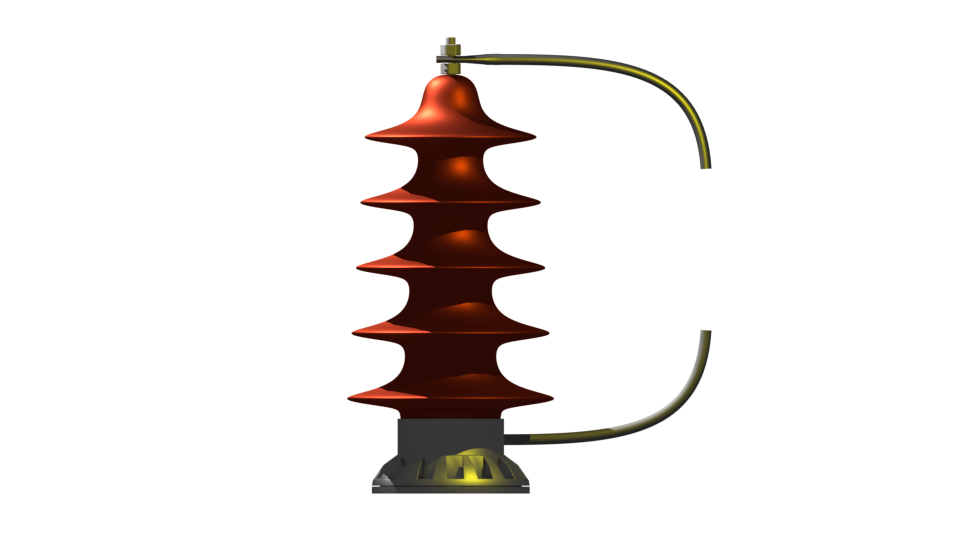
This arrester consists of two metal rods with a defined air gap between their heads, known as the spark gap. One rod is connected to the line conductor, while the other is connected to the ground. The spacing between the rod heads is determined by the voltage rating of the system.
When a voltage surge appears on the line, the electric field across the spark gap increases. If this field exceeds the dielectric strength of air, the air in the gap becomes ionized, initiating an arc. This arc provides a low-resistance path, allowing the surge energy to be diverted safely to ground, thereby protecting the connected equipment from overvoltage damage.
Horn Gap Lightning Arrester
Horn Gap Arrester is another type of simple lightning arrester. Construction-wise, it is as simple as the rod-type arrester. Here, two horn-shaped metal rods with a gap in between them are connected across the system. That means, one horn is connected to the line and the other with the ground.
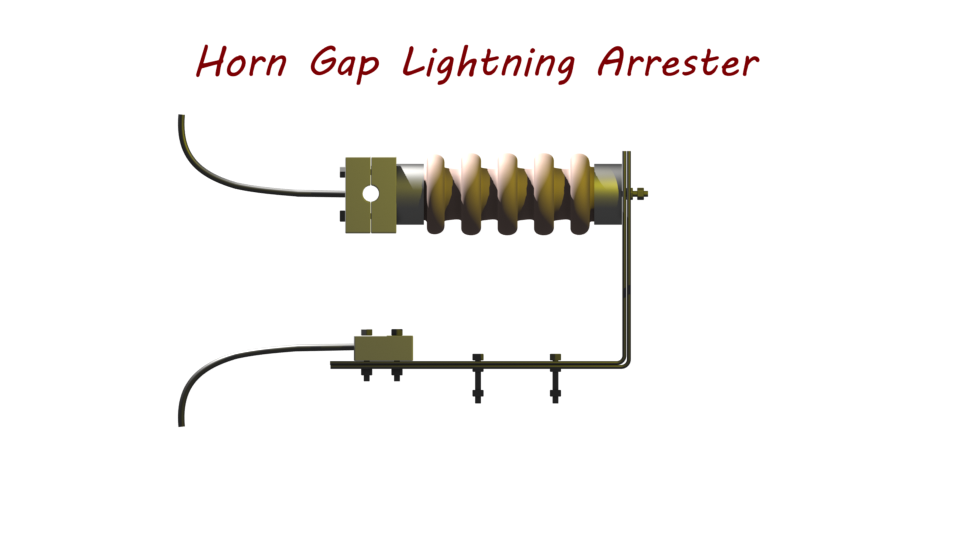
Like the rod-type arrester, the gap between the metal horns is maintained sufficiently to withstand the system phase voltage. The gap is maintained on the basis of the system voltage level, considering the dielectric strength of air. During a high-voltage surge, due to the imposed higher voltage gradient between the horns, an arc forms across the gap. The arc rises and lengthens along the horns due to thermal and magnetic effects, which helps in self-extinguishing the arc after the surge. In the rod-type arrester, the arc may often sustain even after the actual surge is over. This drawback of the rod-type arrester is overcome in the horn gap lightning arrester. This type of arrester is still in use in very limited applications in low and medium voltage outdoor systems.
Valve Type Lightning Arrester
A valve-type lightning arrester offers enhanced performance compared to simpler arresters like rod or horn gap types. The main drawback of both rod gap type and horn type lightning arresters is the sustainability of the arc even after the surge is gone. Although the horn gap is the improved version and has a better arc extinguishing mechanism, it is still not foolproof. This drawback is overcome in a valve type lightning arrester. This arrester is primarily composed of two main elements: a set of spark gaps and a non-linear resistor assembly. The resistors are typically made from materials such as silicon carbide or metal oxide, and the entire unit is housed within a durable insulating enclosure for environmental protection and reliability.
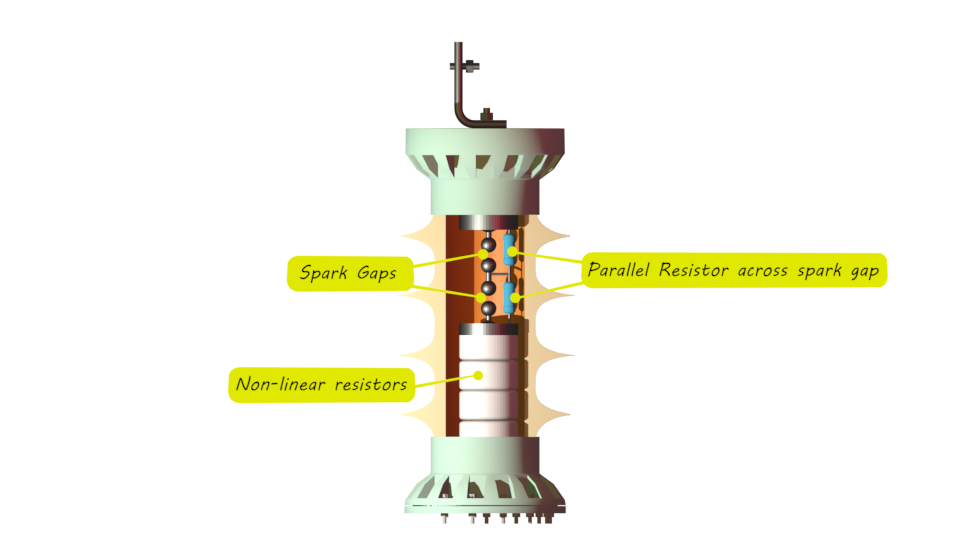
The term non-linear refers to the resistor’s property of decreasing resistance with increasing voltage. During normal operation, the arrester remains non-conductive. However, when a surge caused by lightning or switching events occurs, sparking starts in the gaps. This is because the air in the gaps gets ionized due to high voltage stress. At the same time, the non-linear resistors connected in series with the gaps become highly conductive as the high voltage appears at the terminal of the resistors due to the conduction of sparks. This conductive condition of the resistors allows current to flow to the ground. As soon as the surge voltage comes down below the threshold, the resistors quickly return to its high resistive mode and stop current to flow further. In this way it limits the surge by clamping the voltage to a safe level. That means current conduction stops automatically, ensuring no damage to the system components.
Valve type arresters are known for their quick response time, durability, and ability to withstand repeated surges without degradation. Their compact size and reliable performance make them ideal for use in modern electrical infrastructure. These devices are typically installed in transformer yards, substations, and along high-voltage transmission lines to safeguard critical electrical assets from both lightning-induced and internal switching surges. Also, the performance of valve type lighting arrester does not depend upon the moisture level of the air. This is one drawback of rod type or horn type lightning arrester. This design of arrester eliminates bird-induced flashover faults (also called bird faults), which are common in rod-gap or horn-type arresters. When birds sit on the rod-gap or horn-type arrester, they can bridge the gap and cause flashovers, which are called bird faults.
Gapless Metal Oxide (ZnO) Lightning Arrester
A metal oxide gap-less design of lightning arrester is a further improvement over a valve-type lightning arrester with a spark gap. Metal oxide (ZnO) discs are the core components of a metal oxide gap-less arrester. These discs are made of zinc oxide (94% to 96%) mixed with small amounts of other oxides (such as bismuth, cobalt, and manganese) in proportions of 6% to 4%. These discs act as non-linear resistors, offering high resistance at normal voltage and low resistance during surge conditions.
By placing these discs one upon another, a column of the required height is formed. The number of discs in each column depends on the voltage rating of the arrester unit. Top and bottom metal electrodes connect the column of ZnO blocks to the external electrical circuit. A spring of sufficient strength is fitted between the top electrode cap and the top of the ZnO disc column. This arrangement ensures compactness between the discs in the column and facilitates efficient current flow through the discs during surges.
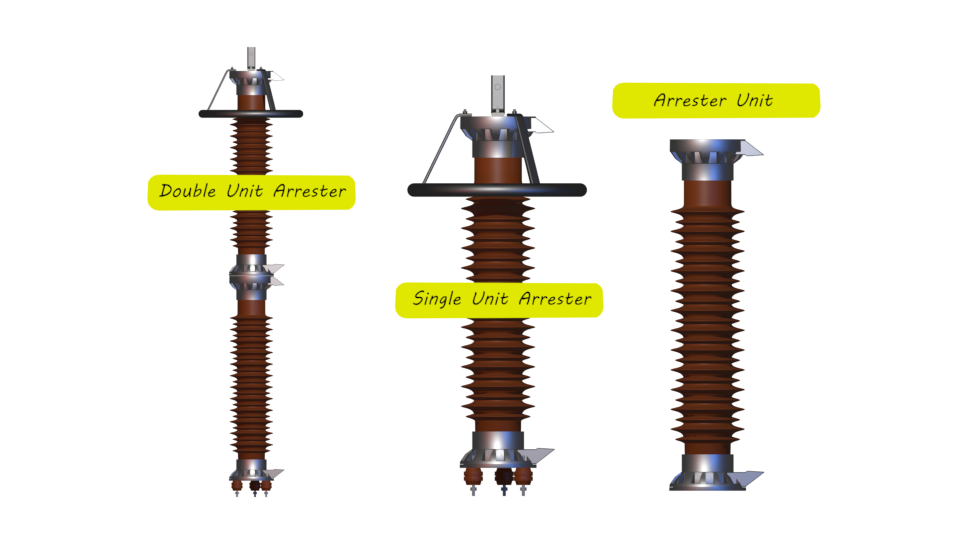
The insulating housing, made of porcelain or polymer/composite materials, provides mechanical strength and weather resistance. Metallic end caps (often aluminum or stainless steel) are crimped or glued to the housing ends to provide airtight sealing and prevent moisture entry. A pressure relief system is provided at either one or both ends of the arrester unit. This system includes a vent with a diaphragm that ruptures to safely release internal pressure generated during heavy fault conditions.
Here it should be noted that instead of constructing the entire arrester at once, it is always preferable to construct the arrester unit-wise for easy transportation. At the site, the required number of such units is fitted one upon another to form the whole arrester of the required voltage rating. The number of arrester units to be fitted depends upon the voltage rating of the whole arrester.
